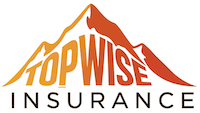Home Insurance for First-Time Buyers: 2025 Checklist
Published on July 10, 2025

Sarah Patel
Homeowners & Property Insurance Expert.
Sarah Patel is a property underwriter-turned-writer with 10 years in the field; she focuses on flood, wildfire, and replacement-cost planning for homeowners.
Introduction
Buying your first home is a huge milestone, and protecting it starts with choosing the right homeowners insurance policy. With rising construction costs, climate-related risks, and insurer variation in 2025, getting the best coverage requires more than just picking the cheapest option.
This guide walks first-time buyers through the essentials—from understanding coverage types and policy structures to identifying first-time buyer discounts and avoiding costly mistakes. With this checklist, you’ll feel confident securing home insurance for your new home.
✅ 1. Know What a Standard Home Insurance Policy Covers
A typical homeowners insurance policy includes several types of protection:
- Dwelling coverage: Pays to rebuild or repair your home after covered events like fire, theft, or hail
- Personal property: Covers your belongings such as electronics, furniture, and appliances
- Liability insurance: Protects you if someone is injured on your property or you cause damage to someone else's property
- Loss of use (ALE): Covers additional living expenses if your home is temporarily uninhabitable due to a covered claim
However, some risks—like floods and earthquakes—are not covered by default. You may need additional policies or riders to fully protect your home.
✅ 2. Understand the Difference Between HO-3 and HO-5 Policies
Most first-time buyers choose an HO-3 or HO-5 policy. The HO-3 is the most common and covers your home against named perils (specific risks listed in the policy) while providing limited coverage for your belongings.
In contrast, an HO-5 policy offers open-peril coverage for both your home and personal property, meaning it protects against more potential causes of damage unless specifically excluded.
If your home is newly built or higher value, HO-5 may be the better long-term investment.
(HO-3 vs HO-5 Home Insurance Policy: Which One Should You Choose?)
✅ 3. Estimate the Right Coverage Amounts
Your dwelling coverage limit should reflect your home’s rebuilding cost, not the market price. Use a professional cost estimator or your insurer’s calculator for accuracy.
Also consider:
- Adding scheduled personal property coverage for high-value items (e.g., jewelry, collectibles)
- Increasing liability limits if you entertain guests, have a pool, or own a pet
Adequate coverage today prevents future financial hardship.
✅ 4. Compare Home Insurance Quotes from Multiple Providers
Premiums can vary by hundreds of dollars per year—even for the same coverage. That’s why comparing home insurance quotes for first-time buyers is essential. Use licensed comparison tools or work with an independent agent.
Look at:
- Coverage options and limits
- Deductible flexibility
- Financial strength (e.g., AM Best rating)
- Customer service and claims reputation
Shopping around is one of the best ways to find affordable homeowners insurance that meets your needs.
✅ 5. Ask About Discounts for First-Time Buyers
Insurers may offer specific discounts that first-time homeowners often miss:
- New home buyer discount
- Bundling home and auto insurance with the same provider
- Security system or smart home device installation
- No prior claims history (e.g., from renters insurance)
Always ask your agent what discount opportunities exist based on your profile.
✅ 6. Choose the Right Deductible for Your Budget
Your deductible is what you’ll pay before the insurance kicks in. Higher deductibles mean lower premiums—but make sure the amount is realistic for your savings.
For first-time homeowners in 2025, a $1,000 deductible is a popular balance point between affordability and risk management.
✅ 7. Carefully Review Your Policy Before Committing
Before signing, read your Summary of Benefits and Coverage (SBC) and ask questions. Ensure you understand:
- What’s covered vs. excluded
- Whether reimbursement is based on replacement cost or actual cash value
- Any policy limits on categories like electronics, bicycles, or landscaping
Don't assume everything is included—get clarity up front.
Conclusion
Choosing your first homeowners insurance policy doesn’t have to be overwhelming. By learning how coverage works, comparing reputable insurers, maximizing first-time buyer discounts, and reviewing your policy carefully, you can protect your home and finances with confidence.
In 2025, smart homebuyers take a proactive approach to insurance. Use this checklist as a guide, and you’ll be one step ahead in securing long-term peace of mind.
You Might Also Like
9 Critical Steps for Getting Home Insurance After a Claim in 2025
Aug 1, 2025Top 17 Must-Know Facts About Home Insurance for Condos 2025
Aug 1, 20255 Proven Strategies to Lower Your Homeowners Insurance Premium in 2025
Jul 8, 2025HO-3 vs HO-5 Home Insurance Policy: Which One Should You Choose?
Jul 7, 2025What Is Home Insurance and How Does It Work in the U.S.?
Jul 2, 2025
